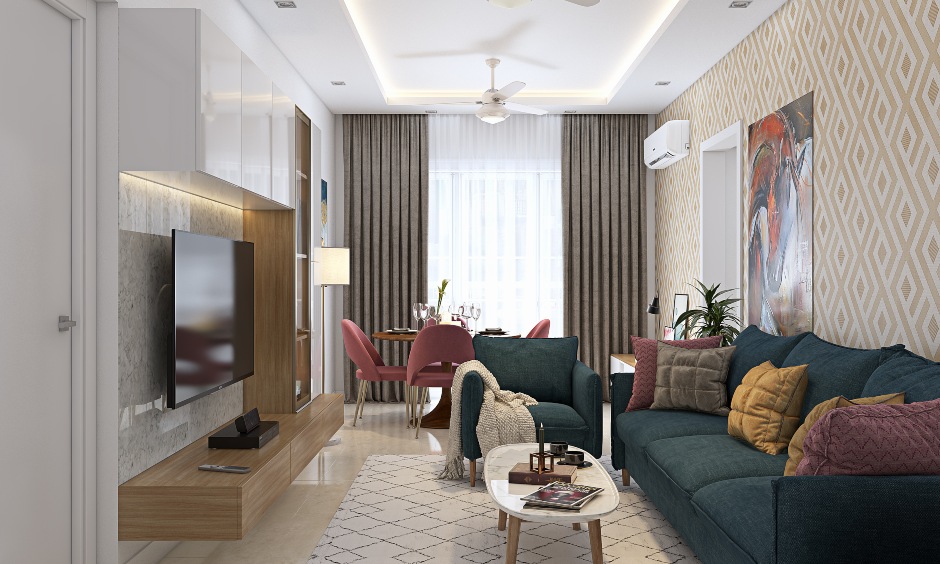
When it comes to designing a space, taking inspiration from the world of hospitality design can truly transform your home. Hospitality design focuses on creating welcoming, comfortable, and aesthetically pleasing environments that cater to the needs of guests. By incorporating some of these design principles into your own living spaces, you can elevate the look and feel of your home. Let's take an exclusive look inside the world of hospitality design and uncover some tips and tricks that homeowners can use to enhance their own spaces.
The Importance of Functionality
One of the key principles of hospitality design is ensuring that spaces are not only visually appealing but also highly functional. When designing your home, consider how each room will be used and tailor the layout and furniture to meet those needs.
Tips for Enhancing Functionality:
- Opt for multi-functional furniture pieces that can serve more than one purpose, such as a sofa bed or a storage ottoman.
- Create designated zones within a room for different activities, such as a reading nook or a workspace.
- Maximize storage space to keep clutter at bay and maintain a clean, organized look.
The Power of Lighting
Lighting plays a crucial role in hospitality design, setting the mood and ambiance of a space. By carefully considering the lighting in your home, you can create different atmospheres for various activities and enhance the overall aesthetic.
Tips for Maximizing Lighting:
- Incorporate a mix of ambient, task, and accent lighting to provide both overall illumination and focused light where needed.
- Utilize natural light whenever possible to create a bright and inviting atmosphere.
- Consider dimmer switches or smart lighting systems to easily adjust the brightness levels according to the time of day or activity.
The Role of Texture and Color
Texture and color are essential elements in hospitality design that can add depth, visual interest, and personality to a space. By carefully selecting materials and hues, you can create a cohesive and inviting environment in your home.
Tips for Incorporating Texture and Color:
- Mix different textures, such as smooth leather, cozy wool, and rustic wood, to add tactile appeal to your space.
- Choose a color palette that reflects your personal style and the mood you want to create, whether it's calming neutrals or vibrant pops of color.
- Use accent pieces like throw pillows, rugs, and artwork to introduce texture and color into a room without committing to a major design change.
The Art of Layering
Layering is a design technique commonly used in hospitality spaces to create a sense of depth and visual interest. By incorporating multiple elements in your home decor, you can achieve a curated and sophisticated look that feels welcoming and inviting.
Tips for Mastering the Art of Layering:
- Mix and match patterns, textures, and materials to create a dynamic and visually appealing space.
- Layer different types of lighting, such as overhead fixtures, table lamps, and candles, to add warmth and dimension to a room.
- Add personal touches like family photos, travel souvenirs, and heirloom pieces to infuse your home with character and charm.
Bringing the Outdoors In
Nature-inspired elements are a hallmark of hospitality design, as they can help create a sense of tranquility and connection to the outdoors. By incorporating natural materials, greenery, and earthy tones into your home, you can create a relaxing and rejuvenating space that feels like a retreat.
Tips for Embracing Nature in Your Home:
- Introduce houseplants or fresh flowers to bring a touch of nature indoors and improve air quality.
- Use natural materials like wood, stone, and rattan to add warmth and texture to your decor.
- Consider incorporating elements of water, such as a tabletop fountain or a small indoor pond, to create a soothing ambiance.
By taking inspiration from the world of hospitality design and incorporating some of these tips and tricks into your home, you can create a space that is not only visually stunning but also functional, welcoming, and personalized to your taste. Whether you're looking to revamp a single room or redesign your entire home, these design principles can help you achieve a space that reflects your style and enhances your everyday life.
